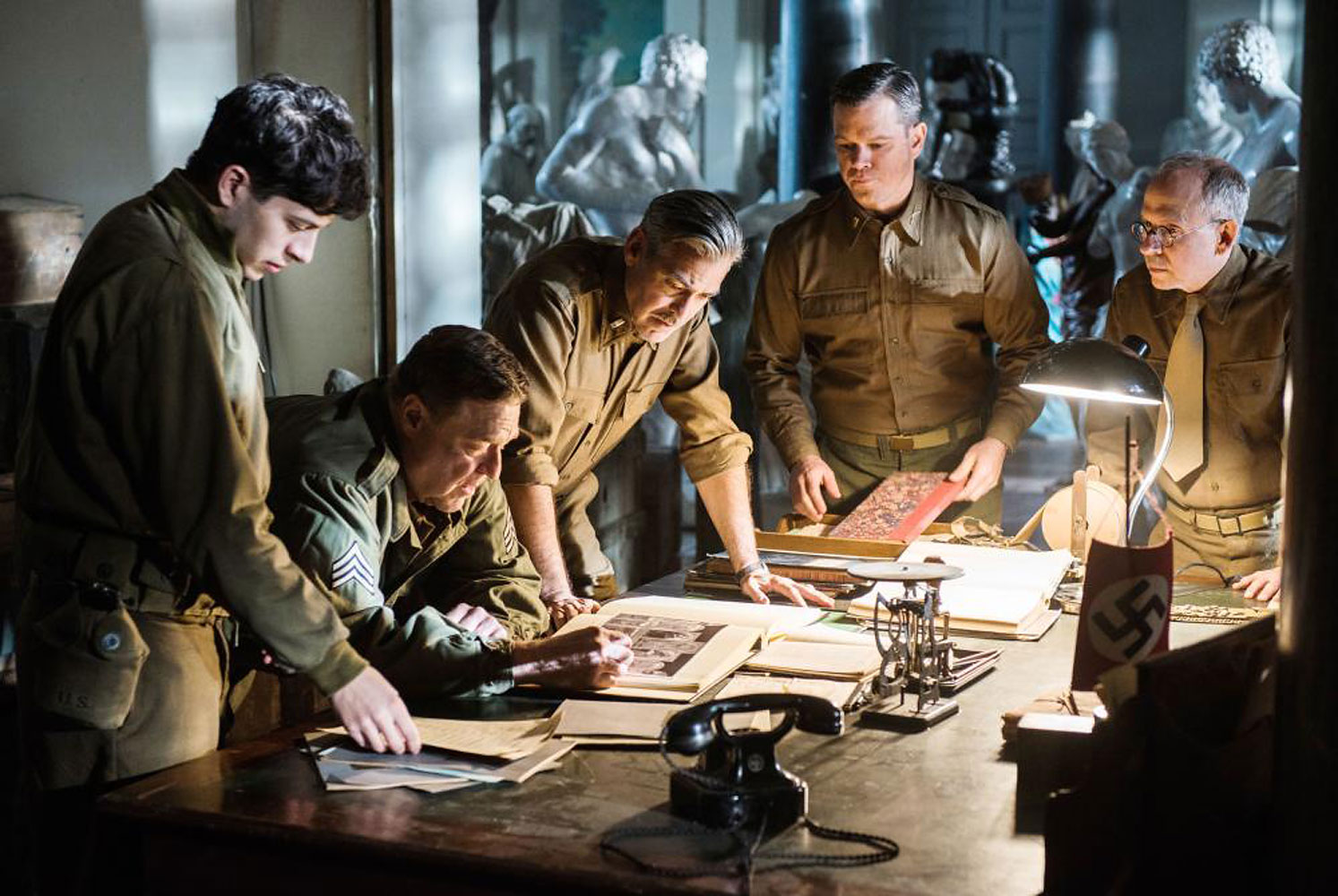
Adolf Hitler, a frustrated painter who found other outlets for his creative anger, was the most prolific art collector since Napoleon. He acquired his stash of sculptures, paintings and monuments the same way Napoleon did: by conquering nations and claiming the treasure. Some of the loot (particularly from antiquity) he intended to put on display in a museum in his hometown of Linz, Austria; some (including modern, especially by Jews) he planned to burn, like his least favorite books. Toward the end of World War II, when the thousand-year reign of the Third Reich looked to be ending about 988 years early, the German high command issued the Nero Decree: if Hitler were to die, all the art the Nazis had stolen and hidden must be destroyed.
Franklin Roosevelt’s notion of art’s value was more sophisticated than Hitler’s — and Donald Rumsfeld’s. Recall the Defense Secretary’s reaction to the news in April 2003 that the Iraq National Museum, housing priceless artifacts dating to the dawn of civilization 6,000 years ago, had been looted while U.S. forces occupied Baghdad. “Freedom’s untidy,” Rumsfeld said. “Stuff happens.” To keep stuff from happening in Hitler’s Europe, Roosevelt and his allies set up the Monuments, Fine Arts and Archives section, a mission of museum curators and art historians to recapture and protect the treasures the Germany military had stolen from invaded nations and its own Jewish citizens. Thanks to the 365 MFAA heroes, many thousands of artworks were saved, and many of those were restored to their rightful owners or their surviving kin.
(MORE: How the Monuments Men Won the Art War Against Hitler)
The Monuments Men, based on the book by Robert Edsel and Bret Witter, is George Clooney’s vigorous attempt to invest vivid movie life into the story of a group of middle-aged intellectuals who often had to skirt U.S. Army dicta even as they schemed to save Europe’s culture. In writing the lightly fictionalized script with Grant Heslov, and directing himself and a starry cast, Clooney kept the tone low-key and, necessarily, anecdotal. This isn’t Lee Marvin’s Dirty Dozen, a platoon of martial misfits on a single mission. They are the Arty Dozen, more or less, often on separate sorties spanning France, Germany and Belgium, chasing Picassos, Matisses and a Michelangelo Madonna.
In Inglourious Basterds, his version of The Dirty Dozen, Quentin Tarantino fantasized that the Jews rose to kill Hitler. Clooney, sticking pretty much to the facts, shows how a handful of art historians killed the Führer’s dream of annexing and purifying European culture.
(MORE: Richard Corliss’s Review of Inglourious Basterds)
Frank Stokes (Clooney) and his American colleagues — Richard Campbell (Bill Murray), Preston Savitz (Bob Balaban), Walter Garfield (John Goodman) — were bred as scholars, not soldiers. They are joined by Jean-Claude Clermont (Jean Dujardin), a member of the French Resistance, and the one youngster on the team: Sam Epstein (Dimitri Leonidas), a Jew who escaped Hitler, went to America and has returned for payback.
In Paris, the Metropolitan Museum’s James Granger (Matt Damon) finds an invaluable ally in Clare Simone (Cate Blanchett), who has worked at the Jeu de Paume, France’s repository of Impressionist masterpieces, and under the noses of the Nazis has secretly kept a record of their transactions. One of Stokes’ men, the English art historian Donald Jeffries (Downton Abbey‘s Hugh Bonneville), makes his way to Bruges, Belgium, to a church where he may find the Michelangelo. “Are you Catholic?” a priest asks. Jeffries replies, “I am tonight.”
(MORE: Clooney and Blanchett Revisit World War II in The Good German)
Hollywood addressed this theme nearly a half-century ago, in John Frankenheimer’s 1965 film The Train, with Burt Lancaster as a French Resistance leader charged with retrieving his country’s art from the Nazis. Both films dance the tightrope of culture and carnage. Lancaster: “I won’t waste lives on paintings.” Clooney: “No piece of art is worth a man’s life.” But it is worth a movie — two movies, one a burly action epic, the other a more thoughtful character study — about brave people engaged in the fine art of saving it for generations to come. So Lancaster bellows, “It’s our national heritage, the glory of France!” And Clooney proclaims, “We’re fighting for a culture and our way of life. If you destroy their achievements, their history, then it’s as if they never existed.”
(MORE: Subscribe for TIME’s 1965 Review of The Train)
The Monuments Men has its share of startling moments — a visit to the dentist that leads to an Impressionist cache, and the revelation of mountains of German gold, appallingly appropriated from the teeth of exterminated Jews — plus a land-mine dilemma for Damon. But rather than juicing each element to blockbuster volume, Clooney has delivered it in the tone of a memorial lecture, warm and ambling, given by one of the distinguished academics he put in his movie. Unused to physical daring, they found surprising resources of grit, stamina and ingenuity. They risked their lives to save a culture that preceded them by centuries and, because of their devotion, will outlast them by centuries.
At the end, a much older Frank Stokes (played by Clooney’s newscaster father Nick, now 80) takes his grandson to see some of the classical handiwork the Monuments Men reclaimed from Hitler. They deserved their own movie monument, which Clooney has generously and artfully given them.
More Must-Reads from TIME
- Donald Trump Is TIME's 2024 Person of the Year
- Why We Chose Trump as Person of the Year
- Is Intermittent Fasting Good or Bad for You?
- The 100 Must-Read Books of 2024
- The 20 Best Christmas TV Episodes
- Column: If Optimism Feels Ridiculous Now, Try Hope
- The Future of Climate Action Is Trade Policy
- Merle Bombardieri Is Helping People Make the Baby Decision
Contact us at letters@time.com